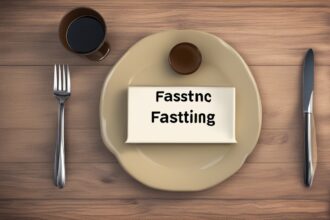Have you ever wondered what fasting really is and why it’s been practiced for centuries across cultures and religions? Fasting, at its core, is the voluntary abstention from food and sometimes drink for a specific period. While it might sound like a modern health trend, the history of fasting stretches back thousands of years, rooted in spiritual, cultural, and even survival practices. Today, fasting is celebrated not just for its religious significance but also for its potential health benefits, backed by science. In this post, we’ll uncover the origins of fasting, explore its evolution, and share practical tips to help you understand how this ancient practice can fit into a modern lifestyle. Let’s dive into the fascinating world of fasting and discover why it’s more than just skipping a meal!
The Ancient Roots: Unpacking the History of Fasting
The history of fasting is as old as human civilization itself. Long before intermittent fasting became a buzzword, ancient societies practiced fasting for a variety of reasons. In many early cultures, fasting was tied to spiritual purification and connection with the divine. For instance, ancient Egyptians fasted before important religious ceremonies to cleanse their bodies and minds. Similarly, indigenous tribes across the world often fasted during rites of passage or to seek visions and guidance. Fasting wasn’t just a choice; it was often a necessity during times of scarcity, teaching early humans resilience and adaptability. Understanding these ancient fasting practices helps us appreciate how deeply embedded this tradition is in human history.
Religious Significance: Fasting Across Faiths
One of the most prominent threads in the history of fasting is its role in religion. Almost every major faith incorporates fasting as a form of discipline, devotion, or penance. In Islam, Ramadan is a month-long fast where Muslims abstain from food and drink from dawn to dusk, focusing on prayer and self-reflection. Christianity observes Lent, a 40-day period of fasting or reduced consumption leading up to Easter. In Hinduism, fasting is common during festivals like Navratri, often involving specific food restrictions. These religious fasting traditions highlight a universal theme: abstaining from physical needs to prioritize spiritual growth. Even today, millions participate in these practices, showing how fasting remains a timeless act of faith.
The Science Behind Fasting: Why It Works
While the history of fasting is steeped in tradition, modern science has started to explain why this practice can be beneficial. When you fast, your body shifts from using glucose as its primary energy source to burning stored fat, a process called ketosis. Studies suggest that fasting can improve insulin sensitivity, promote cellular repair through autophagy, and even reduce inflammation. Research published in journals like The New England Journal of Medicine has linked intermittent fasting to potential benefits for heart health and brain function. However, it’s not a one-size-fits-all solution. Consulting a healthcare provider before starting any fasting regimen is crucial, especially if you have underlying health conditions. The science of fasting continues to evolve, blending ancient wisdom with cutting-edge discoveries.
Types of Fasting: From Ancient to Modern
As the history of fasting progressed, so did the ways people approached it. Today, there are numerous fasting methods, each with its own rules and benefits. Here are some popular types that have emerged over time:
- Intermittent Fasting (IF): Alternating periods of eating and fasting, such as the 16:8 method (16 hours fasting, 8 hours eating), popular for weight management.
- Water Fasting: Consuming only water for a set period, often used in medical or detox contexts under supervision.
- Religious Fasting: Structured fasts like Ramadan or Yom Kippur, focusing on spiritual goals over physical ones.
- Juice Fasting: Replacing meals with juices to provide nutrients while still restricting solid food intake.
Each type reflects how fasting has adapted from its historical roots to suit modern needs, whether for health, spirituality, or both.
Practical Tips for Starting Your Fasting Journey
If the history of fasting and its benefits have piqued your interest, you might be eager to try it yourself. But where do you start? Fasting can be intimidating, especially if you’re new to it. Don’t worry—I’ve got you covered with some practical advice to ease into this ancient practice. The key is to start slow and listen to your body. Here are a few tips to help you begin:
- Start Small: If you’re new to fasting, try a shorter window, like skipping breakfast for a 12-hour fast overnight.
- Stay Hydrated: Drink plenty of water during fasting periods to avoid dehydration, especially during longer fasts.
- Plan Your Meals: Focus on nutrient-dense foods during eating windows to support your body’s needs.
- Avoid Overdoing It: Don’t jump into extended fasts right away; build up gradually to prevent fatigue or dizziness.
- Listen to Your Body: If you feel unwell, stop fasting and reassess—health always comes first.
By incorporating these tips, you can explore fasting in a way that aligns with both its historical significance and your personal wellness goals.
Cultural Evolution: Fasting in the Modern Era
The history of fasting didn’t stop with ancient rituals or religious observances—it has evolved dramatically in the modern era. Today, fasting is often associated with health trends like weight loss, detoxification, and longevity. Social media and wellness influencers have popularized methods like intermittent fasting, making it accessible to a global audience. However, this shift has also sparked debates about whether fasting is being commercialized or stripped of its deeper meaning. While some embrace fasting for physical benefits, others argue for preserving its cultural and spiritual roots. This blend of old and new shows how fasting continues to adapt, reflecting society’s changing values and priorities.
In wrapping up, fasting is far more than a diet fad—it’s a practice woven into the fabric of human history, from ancient survival tactics to sacred religious rites. The history of fasting reveals a story of resilience, spirituality, and now, science-backed health benefits. Whether you’re drawn to fasting for its cultural significance, potential wellness perks, or personal growth, there’s no denying its enduring impact. As you consider integrating fasting into your life, remember to approach it mindfully, honoring both its historical depth and your unique needs. So, what’s your next step? Maybe it’s a short fast to test the waters or a deeper dive into the fasting traditions of your own heritage. Whatever path you choose, you’re joining a timeless journey that’s been walked by countless others before you. Let’s keep the conversation going—share your thoughts or experiences with fasting below!






